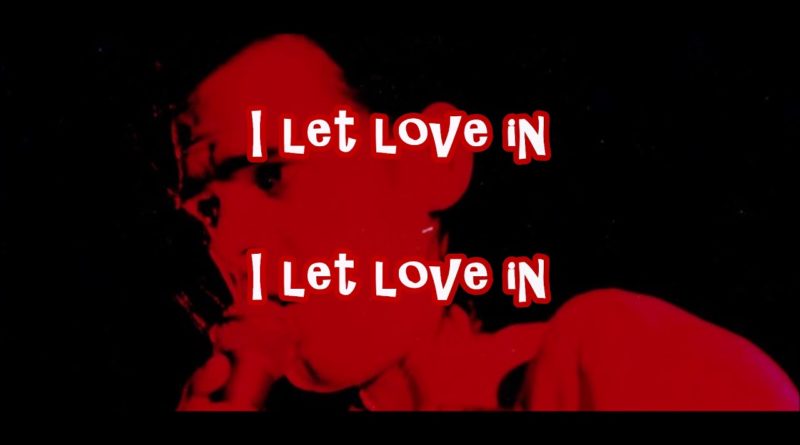Better Than Murder Ballads? Nick Cave and The Bad Seeds’ Let Love In at 25
A look back at a most overlooked album in the Australian alt-rock icon’s canon

Asked recently about whether, in the light of the personal travails of Michael Jackson, R. Kelly and Ryan Adams, artists should be held to the same moral and ethical standards as civilians—and whether one can ever really separate art from the artists who made it—Nick Cave told U.K. newspaper The Guardian:
“Contemporary rock music no longer seems to have the fortitude to contend with these enemies of the imagination, these enemies of art – and in this present form perhaps rock music isn’t worth saving. The permafrost of puritanism could be the antidote for the weariness and nostalgia that grips it.”
Continuing, he intoned that perhaps this new, invasive “moralism” might lead to a, “wild, dangerous and radical form of music can tear its way through the ice, teeth bared, and rock’n’roll can get back to the business of transgression”, a force he described as “fundamental to the artistic imagination, because the imagination deals with the forbidden.”
Transgression? Forbidden? Teeth-Bared? Singer, songwriter, screenwriter, actor, literary figure, ex-heroin junkie and husband of a supermodel Nick Cave’s music has always had a mysterious, otherworldly edge. Its one that revels in exploring the darkness in love, the cathartic aspects of violence and the utter pleasure in wallowing in havoc, lust and deliberate noise. If it’s forbidden, Cave has probably used his booming, often cryptic-toned baritone to go there. The dark twin of Leonard Cohen, Cave–who is a ranting, stalking, nattily attired beast during his unhinged live appearances–is genuinely, and not that surprisingly, best at recording love songs like ones that are the grist and exquisite volatility behind Let Love In. This is Cave’s eighth album with the Bad Seeds, a recording now celebrating the 25th anniversary of its 1994 release.

Granted, these are love songs unlike any other. A new father in 1993 who had just relocated from Brazil to the U.K., Cave was reportedly in a fairly contented state while writing Let Love In. And yet while he could see and feel the beauties of love, he could not help but sense the darker passions and the power, as he mentions in the near -title track, “I Let Love In,” to conjure, “despair and deception,” after arriving in “a cunning disguise.”
Arguably a collection of his most accessible and accomplished songs—”Loverman,” “Jangling Jack,” “Red Right Hand” and “I Let Love In” may be the strongest stretch on any of his records. In “Loverman,” in particular, the complex lyrics tell a happy story that nevertheless feature Cave as a devoted beast, a presence fearful of his own foibles: “There’s a devil waiting outside your door/He’s weak with evil and broken by the world/He’s shouting your name and asking for more/There’s a devil waiting outside your door.”
Reputedly a sour valentine to the USA, there’s a brooding, menacing tone to the clangorous, growled “Jangling Jack”—A Cave standard that must be experienced live to be fully appreciated. That’s followed by the light, spare bounce of the instantly classic, “Red Right Hand,” with its organ break and Theremin discreetly wailing away in the background. “I Let Love In” has a countrified gait, that would suit a murder ballad, maybe not so coincidentally the name and focus of Let Love In’s follow-up, Murder Ballads.
Most tortured of all however is the album’s closer, “Do You Love Me (Part 2).” The terrifying child molestation tale that forms the narrative, with its loss of innocence, ends with exhortations to forget and go on but the images along the way are striking even for Cave. “The city is an ogre/squatting by the river/it gives life but it takes it away, my youth.”
Let Love In benefits from the Bad Seeds in peak form. With the twin guitars of former Birthday Party guitarist Mick Harvey and Einsturzende Neubauten’s Blixa Bargeld rumbling up clouds of explosive bedlam, the band’s backing was never more exacting and energized, swinging between punk volumes and nimble balladry in masterful ways.
Although it was eclipsed in both sales and influence by the record that followed, Murder Ballads, which also remains Cave’s best-known album today, Let Love In, is a more personal statement. Throughout you have the feeling that Cave is speaking about himself, that the demons here are personal and the solutions proposed have already been realized. Perhaps not as popular with the listening public as Murder Ballads, Let Love In has become influential among Cave’s peers, with Metallica and Martin Gore of Depeche Mode both recording covers of “Loverman” and the Arctic Monkey and Giant Sand adding their recorded nterpretations to the ever-increasing luster surrounding “Red Right Hand.” Twenty-five years later, Cave’s Let Love In is still “wild” and “dangerous” and a potent “antidote” for “weariness and nostalgia.”
VIDEO: Let Love In by Nick Cave and the Bad Seeds




